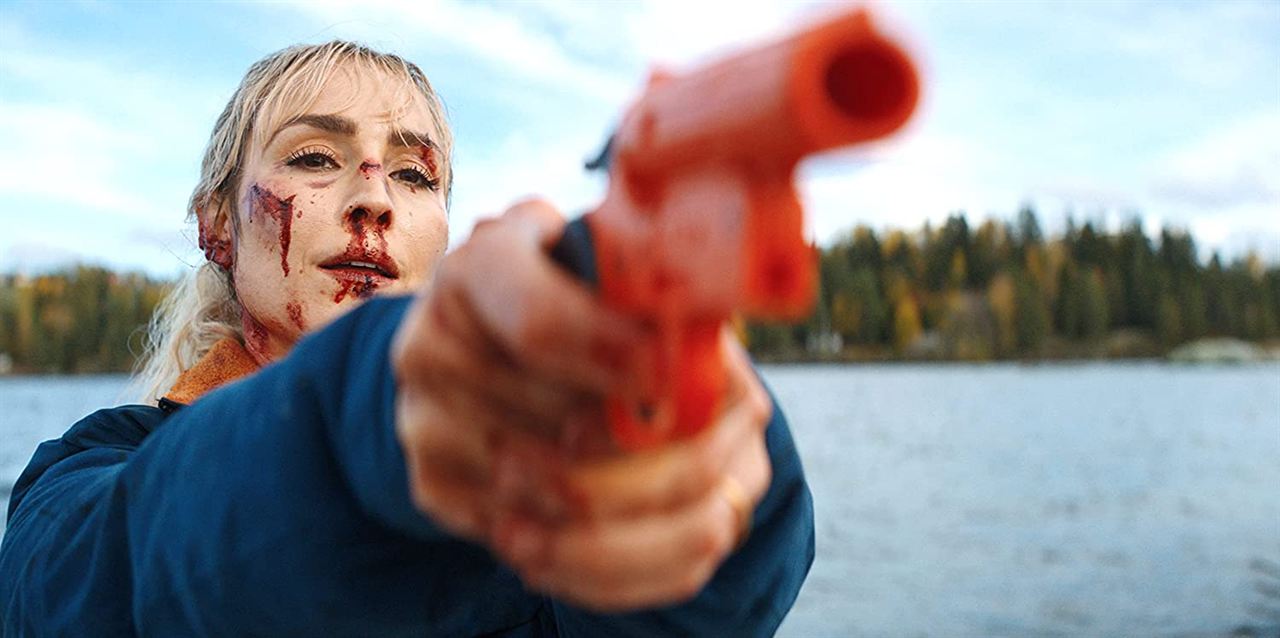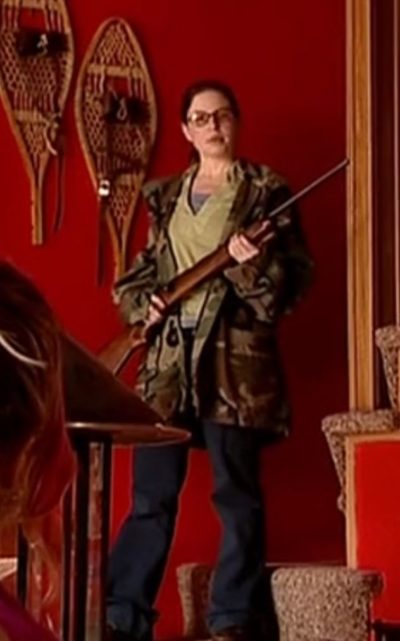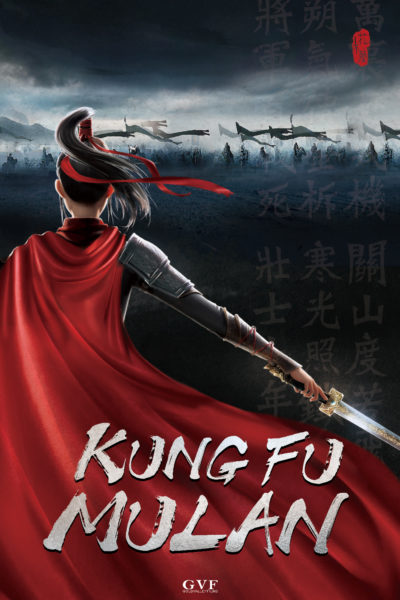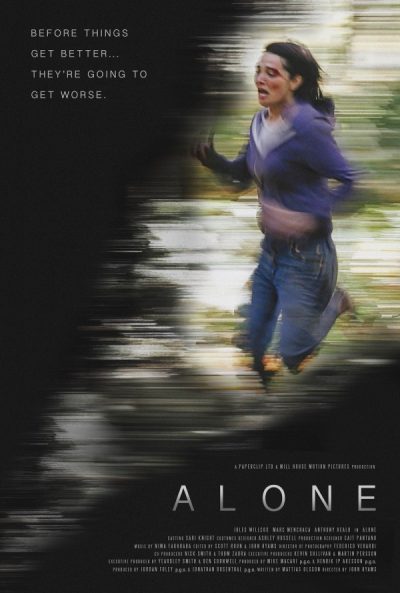★★★½
“The babysitter, murders”
 Josie (Scott) is a babysitter, though her real interest is her work as a leader in the Girl Guide-like “Mustard Seed” summer camp. In this she mentors young girls, and accumulates some nifty skills of her own. This is relevant, due to her current situation. She’s taking care of Sophie (Hazen), the youngest daughter of the Castillo family. The father is a rich music mogul, and they live in a remote mansion, deep in the Utah mountains. The family come back early, but before Josie can leave – she’s playing hide and seek with Sophie – there’s a home invasion by three people, under the leadership of The Woman (Yeaman). They’re no regular burglars, but members of a Satanic cult, intent on retrieving artifacts hidden in the house by its previous owners. These can then be used to sacrifice the inhabitants, and open a portal for… something not very nice to enter our world.
Josie (Scott) is a babysitter, though her real interest is her work as a leader in the Girl Guide-like “Mustard Seed” summer camp. In this she mentors young girls, and accumulates some nifty skills of her own. This is relevant, due to her current situation. She’s taking care of Sophie (Hazen), the youngest daughter of the Castillo family. The father is a rich music mogul, and they live in a remote mansion, deep in the Utah mountains. The family come back early, but before Josie can leave – she’s playing hide and seek with Sophie – there’s a home invasion by three people, under the leadership of The Woman (Yeaman). They’re no regular burglars, but members of a Satanic cult, intent on retrieving artifacts hidden in the house by its previous owners. These can then be used to sacrifice the inhabitants, and open a portal for… something not very nice to enter our world.
It’s quickly made clear that the new arrivals have no problems with killing anyone who attempts to interfere with their mission. But they don’t initially know about Josie’s presence. You can probably work out how the rest of the movie goes from there – and you’ll be more or less right. Josie gets caught, escapes and taps into her inner warrioress, to ensure at least Sophie survives the night. She picks off the intruders, one by one, before eventually facing off against The Woman.
While there’s not an enormous amount new or special in the execution, there are enough wrinkles to lift this above average for the “home invasion” sub-genre. Firstly the heroine is unusual enough to be interesting. She’s a quiet, understated type, who’d rather spend the night babysitting, than go to a party with her friends. Her background in the Mustard Seeds provides a justification for some of her abilities, though it’s an angle I’d like to have seen used more. Maybe, given the Christmas setting, thrown in some Home Alone-style improvised defenses? The other main strength is the antagonist being a woman too, and Yeaman delivers the necessary level of intensity to pull off the role. The apocalyptic motivation is also a fresh one, and there’s enough background dropped in over the course of proceedings, to give this more depth than “because cultists”.
There are some holes in the plot. For example, at one point when Josie is fighting one of the cultists, things get a bit noisy – but the other two seem completely oblivious. There are also points where Josie’s actions seem illogical, or at least where her motivation is unclear. However, Glass keeps things moving forward with sufficient energy to overcome any issues. Credit is also due to cinematographer Neil Fernandez, who does a good job of capturing the isolation, from the opening shot as Josie drives up with her Mom to the mansion. An early game of hide-and-seek both foreshadows subsequent events, and gives us a good look at the home’s interior. For a small-scale, relatively low-budget production this was a pleasant surprise. At 76 minutes, it does what it needs to, and in a lean, efficient way.
Dir: Kohl Glass
Star: Riley Scott, Melinda Yeaman, Nic Fitzgerald, Scarlett Hazen





 ★★★½
★★★½
 Warning: while this review contains no spoilers for the book I’m reviewing, it inevitably involves some spoilers for the book to which it’s a sequel, Anna Dressed in Blood. (I didn’t review that one here; see below). The situation in this book directly grows out of the events of the first one; and though the author provides some brief references to those in the opening chapters here, if you have not read the series opener, you would get only the very bare basics of what happened there. IMO, she expected that her readers will read the books in order, and I would strongly recommend doing so. Your whole understanding of the premise here, your engagement with the story, and your understanding of who most of the major characters are as people and your emotional connection to them will be seriously impaired if you don’t!
Warning: while this review contains no spoilers for the book I’m reviewing, it inevitably involves some spoilers for the book to which it’s a sequel, Anna Dressed in Blood. (I didn’t review that one here; see below). The situation in this book directly grows out of the events of the first one; and though the author provides some brief references to those in the opening chapters here, if you have not read the series opener, you would get only the very bare basics of what happened there. IMO, she expected that her readers will read the books in order, and I would strongly recommend doing so. Your whole understanding of the premise here, your engagement with the story, and your understanding of who most of the major characters are as people and your emotional connection to them will be seriously impaired if you don’t! Going into this, I was expecting it to be really terrible. After all, this Chinese animated version seemed to be little more than a mockbuster, riding on the trails of Disney’s
Going into this, I was expecting it to be really terrible. After all, this Chinese animated version seemed to be little more than a mockbuster, riding on the trails of Disney’s 

 Running a crisp 58 minutes in its omnibus edition, this is a bit like
Running a crisp 58 minutes in its omnibus edition, this is a bit like 
